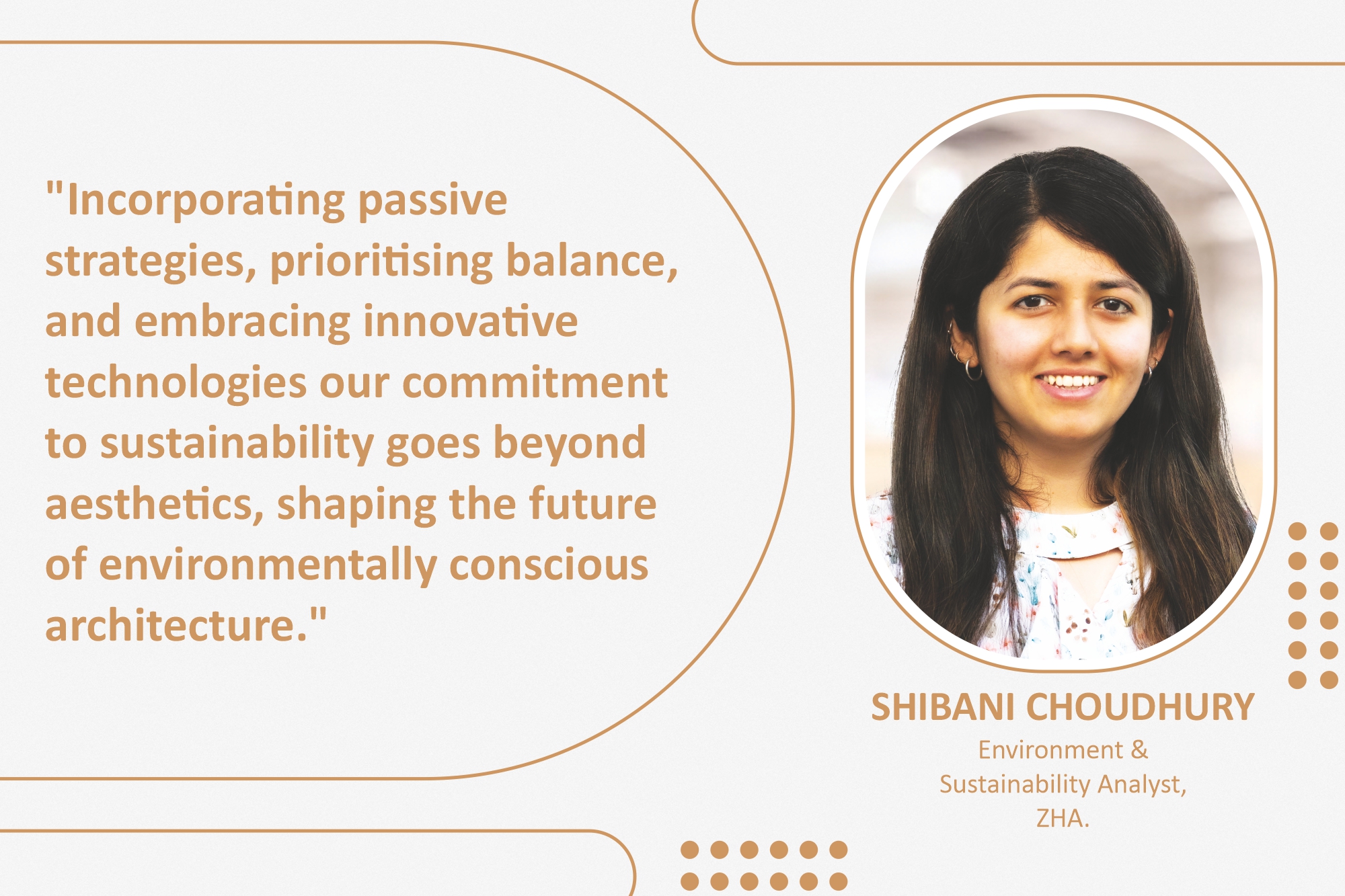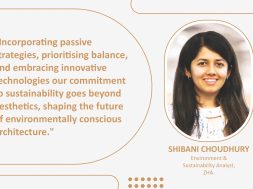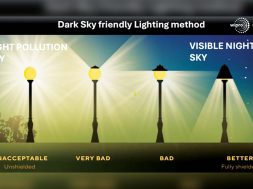Passive design strategies and environmental consciousness

This interaction delves into the design strategies and technologies for net-zero projects to achieve energy neutrality and reduce environmental impact.
How do you incorporate passive design strategies, such as orientation and shading, to optimise energy efficiency in your building projects?
Passive design strategies are energy-free responses to a project’s location, geographical conditions, and climate data. It is important to understand that each area has its nuances. While one place is classified as a particular climate type—say hot and dry—looking at climate history may indicate that night temperatures are pleasant and comfortable. Then, we incorporate that into our design. Learning from indigenous architecture is a good start if one is unfamiliar with the climate. We can lend our design aesthetics to vernacular ideas, thus ensuring optimised energy efficiency through passive means.
How do you address the balance between energy efficiency and aesthetic considerations in your architectural designs?
Achieving this critical balance is what my work demands. The first step is awareness. Once designers share the same concern for the impact of the building on the environment, aesthetics and energy efficiency become complementary parameters. One must also provide environmental targets and guidelines before the design commences. If you make sustainability a part of the brief, like other requirements, energy efficiency is met without compromising aesthetics.

Can you describe your approach to optimising natural lighting in buildings to minimise the need for artificial lighting and enhance energy efficiency?
Designing for daylight is always tricky and must be dealt with in tandem with thermal comfort. Rules of thumb, such as the 15/30 rule or D=2.5H, are good as initial indicators for the quantity of daylight indoors. Still, they must be followed up with detailed simulations that can confirm the effectiveness of the design for optimised and evenly distributed daylight. Some ideas to teach in design include appropriately oriented glazing or skylights, shallow planning, using light shelves, light and reflective indoor finishes, use of atriums, courtyards, and light wells, open plans, flexibility of use, mechanical and user-controlled shading, etc.
How do you approach selecting energy-efficient materials and technologies in your projects, considering both environmental impact and long-term energy savings?
Material selection is driven by multiple factors: origin, composition, supply chain, end-of-life solutions, aesthetics, desired function, feasibility, durability, ease of replacement, performance, and more. A life-cycle assessment of all parameters provides a comprehensive basis for decision-making ruled by environmental impact. A parallel assessment of the selected materials’ cost implications, considering long-term energy and maintenance savings (termed the Return on Investment in Sustainability), is key in choosing energy-efficient materials and technologies for projects.
What design strategies and technologies do you prioritise in net zero projects to achieve energy neutrality and reduce environmental impact?
We have a two-fold approach of reduction and offset focused on the envelope, i.e., Fabric First, which plays a critical role in determining the energy demand of the building. We prioritise envelope efficiency and ensure seamless integration of energy generation systems like solar photovoltaics. The façade industry is booming regarding technological advancements, and today, building envelopes are not just protective barriers but productive elements that can reduce environmental impact.
For more info visit: https://www.zaha-hadid.com/
Cookie Consent
We use cookies to personalize your experience. By continuing to visit this website you agree to our Terms & Conditions, Privacy Policy and Cookie Policy.









